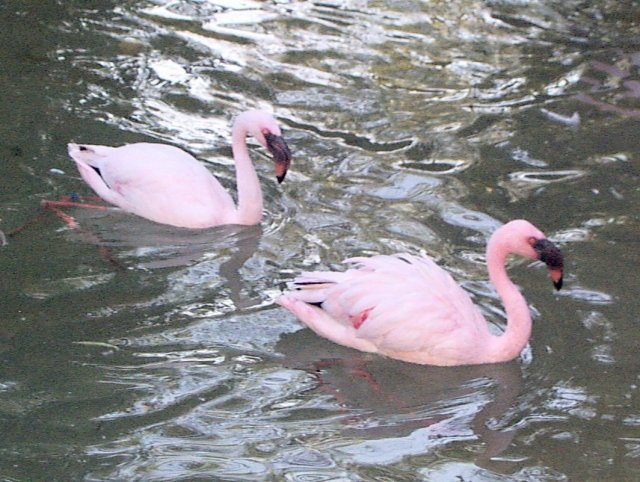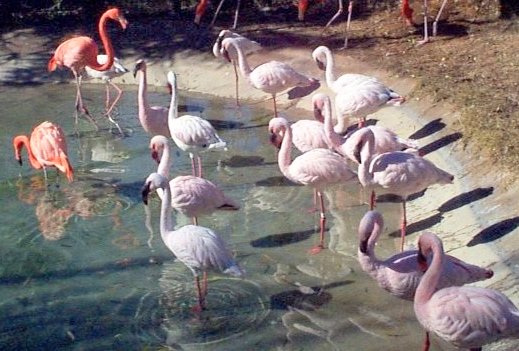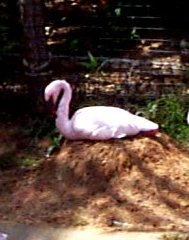|
Special
anatomical, physiological or behavioral adaptations:
 The
bill of the flamingo plays the key role in catching its food.
The bill is held upside down in the water, while the bird sucks in
water, minute organisms are filtered out by a comb-like projection
of the tongue. Water and food that is too large is filtered
out of the bill by way of the slits in the bill. They feed mostly
in the upper layers of the water, and can do so even while swimming. The
bill of the flamingo plays the key role in catching its food.
The bill is held upside down in the water, while the bird sucks in
water, minute organisms are filtered out by a comb-like projection
of the tongue. Water and food that is too large is filtered
out of the bill by way of the slits in the bill. They feed mostly
in the upper layers of the water, and can do so even while swimming.
 Lesser
flamingos are gregarious birds, forming large flocks. Nevertheless,
they form monogamous pairs. Males and females are similar, although
males may be slightly larger. Lesser flamingos can live for as long
as 50 years in captivity. However, some wild populations have been
suffering massive die-offs, possibly because of environmental toxins. Lesser
flamingos are gregarious birds, forming large flocks. Nevertheless,
they form monogamous pairs. Males and females are similar, although
males may be slightly larger. Lesser flamingos can live for as long
as 50 years in captivity. However, some wild populations have been
suffering massive die-offs, possibly because of environmental toxins.

A single egg is laid in a mud nest about a foot high, and
is incubated by both parents. The chicks are white, and juveniles
are gray. The parents produce a kind of milk in the crop -- upper
part of the stomach -- which they feed to the young flamingos.
The color of the feathers changes over the next few years.
The pink color of adult feathers comes from pigments extracted from
their food. How can green algae make pink feathers? Algae contain
carotenoid pigments similar to those that make trees turn color in
the fall.
|